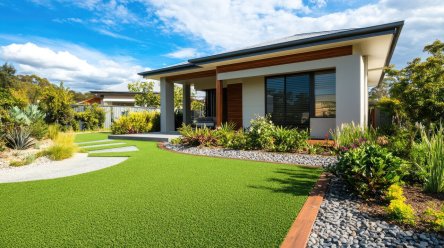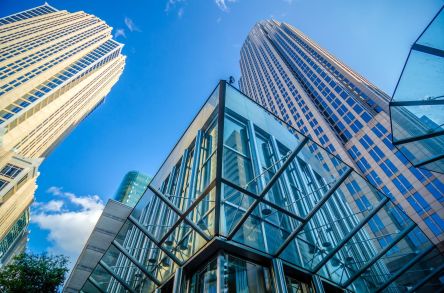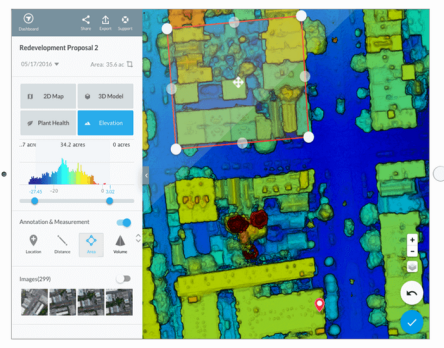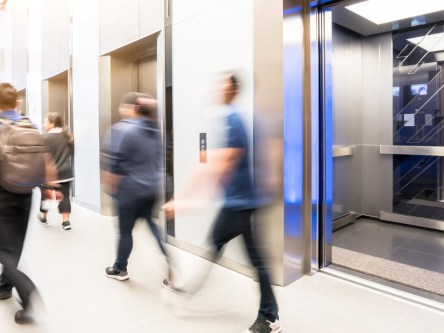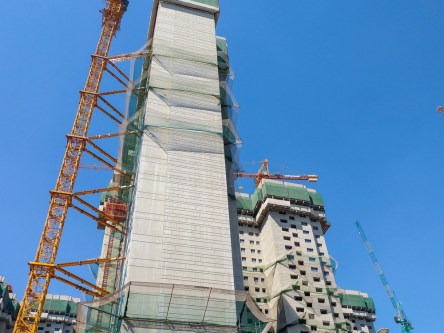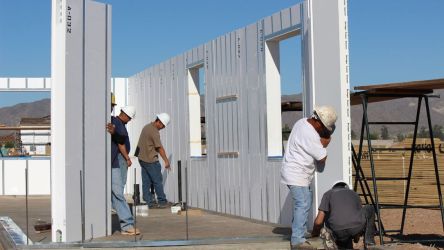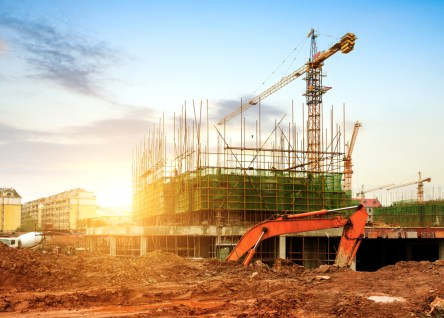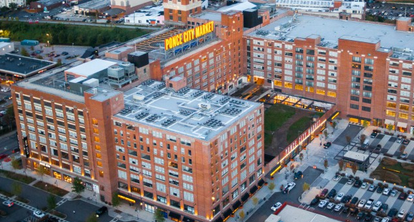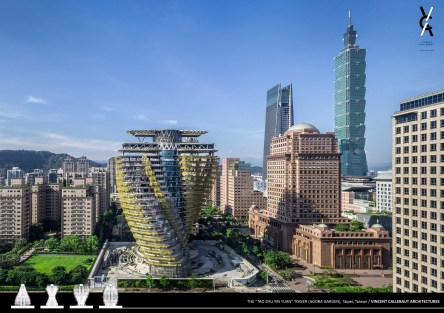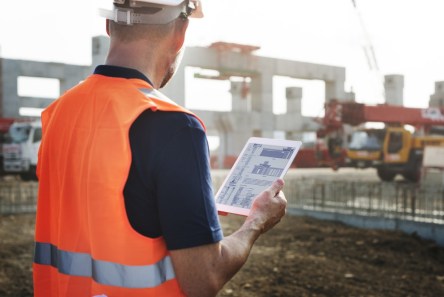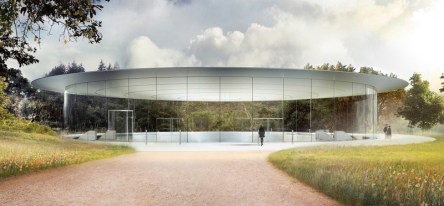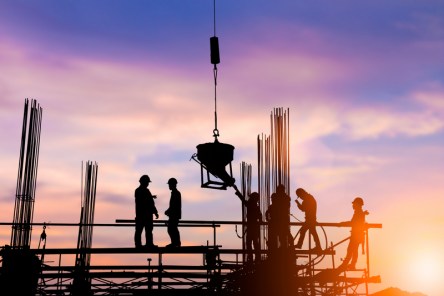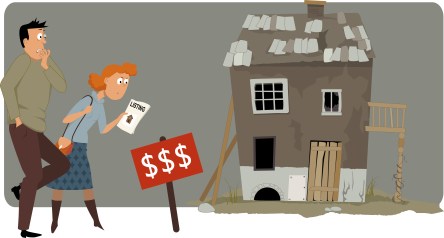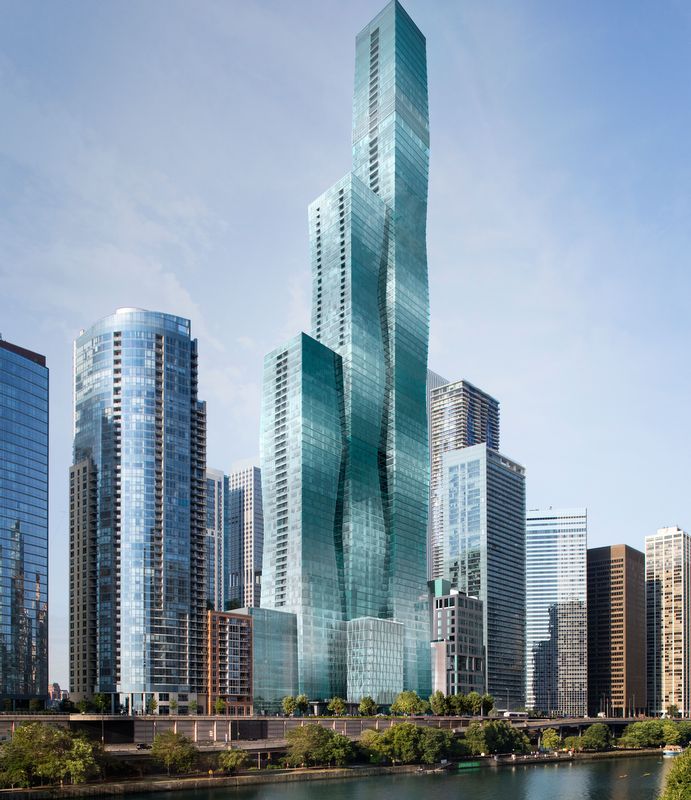Praised by advocates for their beauty and central role in American history, derided by critics for their environmental impacts, lawns – the largest irrigated crop, by area, in the U.S. – occupy a singular place in the American psyche. Lawns, which occupy 40 million acres in the U.S. and consume around 9 billion gallons of water daily, entered the American consciousness early, with resplendent expanses in Britain and elsewhere in Europe inspiring many former colonists. Estates like the White House and Mount Vernon helped popularize the lawn in American culture. In the post-World War II era, boosted by a robust economy and political policies that encouraged homeownership, lawns “became a measure of civic responsibility. The perfect, uninterrupted green of suburban landscapes came to represent the ideal community. The lawn had become by now more than just a part of the home; it is a visible expression of adherence to community norms and values,” says the National Wildlife Federation. Environmental concerns Starting in the 1920s, various chemicals became commonly used as pesticides. Over time, many were linked to declining bird populations, poisoned wildlife and cancer in humans. These ongoing concerns, along with the expense and greenhouse gas emissions associated with maintenance, high water use and displacement of native wildlife and plants, have led some observers to call for traditional lawns to be downplayed, if not abolished, as a landscaping option. Lawn advocates cite a multitude of benefits, including visual appeal, erosion prevention, water filtration, habitats for some species, summer air temperature reduction, recreational space, noise and glare absorption, and rainwater drainage management. They also extol lawns’ superiority to artificial grass, which presents “an even bigger list of problems, from the chemicals used in their production, to the micro-plastic pollution, to the water use to keep them clean,”...
Having a Blast
Destruction in Construction
Before a majestic skyscraper, sleek office building or sturdy apartment complex takes its place on a city’s skyline, a structure currently occupying the space might have to be cleared out. In many cases that requires an explosive sequence that looks like an exercise in disarray but actually is a carefully calculated, prepared and controlled event. An old building is a candidate for demolition when it requires too much maintenance, contains dangerous materials or is otherwise unsafe. It’s fairly easy to level a five-story building using excavators and wrecking balls, but bringing down something on the scale of a 20-story skyscraper safely and efficiently requires an exquisite, fully planned explosive demolition involving “highly trained experts working with debris, weather conditions, materials, mass and physics,” says Irvine, Calif.-based BigRentz, the U.S.’s largest online construction equipment rental network. “Today’s technology can see skyscrapers fall from their stance in a matter of seconds, transforming the aesthetic of a landscape and allowing for new features to be constructed,” adds information source Live Science. Explosives comprise a compound or mixture of compounds that releases tremendous amounts of energy in the form of heat and gas when ignited. They include molecular explosives such as trinitrotoluene (TNT) and nitroglycerin, chemical explosives like dynamite (which includes nitroglycerin) and composite explosives that contain fuel, oxidizers and other self-explosive ingredients. When a building is surrounded by other structures, implosion – a collapse into the structure’s own footprint using explosive materials in a pre-determined, detailed sequence and detonating them at a pre-arranged time – is the method of choice. A series of small explosions, strategically placed within a structure, encourages a collapse by weakening or removing critical supports. Explosives on the lower floors then initiate a controlled collapse and the building fails under its own weight, creating a pile of rubble without damaging nearby buildings. The event is preceded by pre-blast structure surveys, blueprint examinations, 3D modeling, clearing of debris and hazardous materials, planning for vibration and blast control measures, weakening of the supporting columns with sledgehammers or steel-cutters, removal of non-load bearing walls, blast area security and warning methods for the safety of nearby people and structures, and the loading of the columns with explosives. Some demolitions take out the entire structure whereas selective demolition removes specific sections of a building while retaining the structure. This approach is favored for remodels, upgrades and extensions where recycling, reusing and a reduced environmental impact from demolition are a priority. “The violent blasts and billowing dust clouds may look chaotic, but a building implosion is actually one of the most precisely planned, delicately balanced engineering feats you’ll ever see,” says HowStuffWorks, another science information resource. In November 2020, the 540-foot Mina Plaza building in Abu Dhabi, United Arab Emirates, became the tallest building to be demolished using explosives, taking all of 10 seconds. Construction is the fastest-growing segment for the explosives market in the U.S., which also encompasses transportation projects and other infrastructure activities. Mining interests favor explosives as a more versatile, time-saving and less expensive alternative to mechanical drills. The global industrial explosives market was valued at $7.1 billion in 2019 and is projected to reach $10.9 billion by 2027, according to Allied Market Research. “Demolitions are important to the growth a revitalization of our communities and are continually evolving to become more cost-effective, safe and environmentally friendly,” says BigRentz. Property owners can use Yardi Construction Manager to stay on time and on budget through every phase of a commercial real estate construction project – including...
Canadian Influence
On Yardi R&D
Meet Zach Scott. As vice president of programming for Yardi in Canada, Scott leads a team of engineers conducting research and development. This diverse group, primarily located in the Saskatoon and Vancouver offices, works diligently on designing and coding features for some of our leading edge solutions such as Yardi Matrix, Pulse, and IoT. Read on to learn from Scott about some of the fascinating work they do to improve Yardi’s proptech platforms on a daily basis. Are these solutions used primarily in the U.S. or throughout North America? Scott: Over the last two years these products have gained in popularity within the Canadian real estate industry and leadership at Yardi Canada is ready to support the need. Tell us about your team’s involvement in Yardi’s early development of the Internet of Things (IoT) platform? Scott: In 2018, as part of a one-month moonshot challenge, we designed a hub and built the software that now serves as the core of Yardi’s IoT platform. The hub sits in an apartment unit and bridges communication between the various smart devices in the unit and Yardi’s cloud-hosted software. We can’t reveal much about how the hub works or what exactly went into making it but what I can share is that in addition to building software solutions, Yardi has now entered the era of building hardware that connects our clients’ buildings to their business workflows. What do those efforts look like today? Scott: Every month, Yardi ships IoT hubs to be installed at client properties. With hundreds of hubs operating 24/7 today, the team has successfully turned an idea into reality. We continue to add features guided by client feedback. We also have a list of enhancements we’d like to add to the hub, features like Wi-Fi...
Materials Volatility
Churns Construction Industry
Why have housing prices risen so dramatically lately? The answer begins with a huge uptick in demand driven by rising housing starts – seasonally adjusted single family housing starts in December 2020 hit their highest level since 2006 – along with low mortgage interest rates. An equally crucial factor is the rising cost of materials used to build and renovate homes. Structural steel, copper wire and other metal items – prices for all these products have risen substantially because of new housing, locked-down homeowners with time and money to spare for renovations, shut-down factories and lumber mills and tariffs. A sharp upturn in copper prices is “adding tens of thousands of dollars to a half-a-million-dollar” commercial project, according to Ben Goldberg of Petaluma, Calif.-based Simply Solar California. Perhaps the most volatile element is the market for lumber, used for framing, roofs, decks and fencing. In June, lumber costs were up 340% from 2020 levels before dropping dramatically a few weeks later, as sawmills ramped up production and imports increased. By early July, although still well above pre-pandemic levels, prices per board feet of lumber had dropped to 49% of its all-time high on May 28. Prices for other wood products were up 500% from pre-pandemic levels by mid-July, while the cost of steel mill products, up by about 70% in the first few months of 2021, remains high. The National Assn. of Home Builders, an industry advocacy group, estimated in May that the lumber price spike added nearly $12,000 to the market value of an average newly built multifamily home. Some wood products executives see the recent demand surge as a return to normal rather than abnormally high. Housing starts averaged 1.5 million units per year from 1960 through 2010 but lagged far below...
New Solar Mandate
Rooftop vs. Community in Calif.
Sacramento is one of the first cities to renegotiate its path towards sustainable power. Since the inception of California’s rooftop solar mandate, several municipalities have scrambled to accommodate the push towards clean energy. Sacramento may be the first of many cities to take advantage of a loophole in the mandate. Community solar The California Energy Commission approved a proposal from the Sacramento Municipal Utility District (SMUD) that would allow developers to use offsite solar panel installations in some new construction. The community solar option would allow developers to explore more cost-effective options for powering homes off-site. The existing community solar provision applies to shaded apartment buildings and single-family homes. The approved proposal opens the door for developers to choose rooftop solar or SMUD’s community solar for any project in the municipality. Ethan Elkind, director of the climate program at UC Berkeley’s Center for Law, Energy and the Environment explains the implications of the new provision. “There is a really strong precedential value here,” he said. “This is a new regulation that just went into effect, and this community solar piece of it hasn’t really been tested, and so it’s going to set a precedent for years to come for how utilities and real estate developers will respond to this regulation.” New yet weakening regulation? In essence, the new mandate is already accepting exceptions. Rooftop solar advocates fear the broader implications. Laurie Litman, member of the climate group 350 Sacramento, expressed her apprehensions: “The concern is that if it’s cheaper for developers to not put solar on people’s homes, then they’re going to opt for that choice,” says Litman. “That’s going to undermine the solar homes mandate throughout the state because then other areas and other utilities will ask for that waiver as well.” Secondly,...
Is Bigger Better?
Larger Apartments Buildings Cause Debates
Units are getting smaller as apartment buildings grow larger for the first time in history. Interestingly, these large buildings are indicative of the nation’s troubled relationship with rental housing Characteristics of New Housing Report Bloomberg reports that developers completed 211,000 new housing units in about 2,000 buildings with 50 or more units. That’s the largest boom on record since the late 1960s when the survey began. Bloomberg sourced its data from the Characteristics of New Housing report issued by the Census Bureau in partnership with the U.S. Department of Housing and Urban Development. For nearly 50 years, firms focused on developments with 50 or fewer units. As land prices rise, footprints are growing smaller. Apartments are also getting smaller. In 2018, the median size of multifamily units built for rent was 1,081 square feet. That’s 500 square feet smaller than units constructed in 2008. Why Bigger Isn’t Better Smaller buildings have not fallen out of favor with consumers. Rather, the shift towards fewer but larger apartment buildings is indicative of dysfunction in the industry, hypothesizes Justin Fox, financial journalist with Bloomberg Opinion. “Growing regulatory burdens, rising construction costs, and the increasing role of large institutional investors in housing-development finance have tipped the scales in favor of big projects,” he said. He continues, “zoning rules and opposition from would-be neighbors in residential areas have left urban and suburban commercial districts and exurban greenfields as about the only locales open to new housing.” The fallout: neighborhoods are welcoming a few large-scale new developments or no developments at all. Finding Ground for the Middle Ground Mid-sized developments don’t have ground to stand on. Barriers to construction have stifled the growth of multifamily construction overall. Small and mid-sized projects were the first to take the axe. In short,...
Investment Tax Incentive
Yardi Matrix on Opportunity Zones
A new white paper from Yardi Matrix offers insight into the impact of a U.S. real estate investment tax incentive. Tax reform passed in December 2017 designated more than 8,700 low-income “opportunity zones” where capital gains taxes may be lowered or eliminated depending on how long an investment is held. Opportunity zones encompass about 10% of the U.S. population and 12% of the country’s land. The white paper notes that opportunity zones have attracted intense interest from real estate investors because they “draw from a new base of largely untapped investors” and offer value-add opportunities in “new markets that were thought to be too small or risky as investment strategies.” Among the opportunity zone facts reported in the white paper: 9 million multifamily units, 960 million square feet of office space and 180 million square feet of self storage space are either in place or under construction The development pipeline—projects approved but not begun—includes another 450,000 multifamily units, 120 million square feet of office space and 12 million square feet of self storage space As a percentage of total space, properties in place or under construction in opportunity zones represent 13.1% of total multifamily units nationwide, 13.7% of total office space and 11.4% of total self storage space Ground-up development is likely to be a major focus of opportunity fund capital, since the law requires investors to significantly increase the basis of assets purchased. For properties in place, that would mean buildings in need of wholesale improvements, limiting the pool of assets that would qualify Washington, D.C., Phoenix and Brooklyn, N.Y., have the most multifamily units in place and under construction Houston, Detroit and Portland, Ore., are the leaders in office square feet in place and under construction Metros with the most planned and prospective self storage space are Richmond, Va., Phoenix and California’s Inland Empire Learn more about this still-developing investment vehicle in the white paper, titled “The Big Opportunity for Investors in Opportunity Zones.”...
Drones that Map
Applications for Real Estate
Last year was the most significant year for commercial drones yet. More than 66,000 remote drone pilots were certified by the FAA in 2017 in the U.S. alone. Drones made their way into a diverse range of industries, from archaeology to construction, insurance to agriculture. Of course, millions of dollars have been invested in drone services, but Goldman Sachs estimates that the commercial drone market industry will surpass $20 billion by 2021. One of the hottest drone products of the moment is the mapping service. DroneDeploy, a company founded in 2013, recently launched Live Map—the world’s first software able to generate drone maps in real time. Usually, creating a drone map takes time—first you have to plan a mission, fly, capture imagery, go back to your desk to upload the data on your computer (it must be a suitably powerful computer) and then play the waiting game. For hours. With the new service, those hours of waiting disappear—even without a laptop or even internet connection, you get the data you need immediately. The steps are simple: plan a flight, take off, look at maps render on-screen during flight. That’s it. Hundreds of acres of land can easily become consumable maps, shareable to collaborators via instant cloud-syncing across devices. Thus, if more in-depth analysis is required, users can also create higher-resolution 2D maps from the same flight data. Live Map is the next-generation product of Fieldscanner, but it’s five times faster, which makes it capable of keeping up with the real-time challenges of the real world. “Hours of waiting for crop imagery are over. We can capture real-time data in seconds without an internet connection, and begin making smarter crop management decisions before the drone hits the ground,” says Justin Metz, technology integration specialist at...
People Flow
Managing Foot Traffic
Developers, property owners and architects have a new tool available for building design. The Virtual Building Service, an innovation from Budapest-headquartered EIT Digital, creates digital simulations to test and optimize people flow and building occupancy. IBM and KONE, a company that specializes in the elevator and escalator industry, have partnered in the initiative, with KONE acting as business owner and activity leader. The service is designed to make it easier for real estate professionals to design buildings that are financially attractive, while maximizing shared spaces. Simulation data will be collected in real time by sensors, while new facilities will have to rely on input from previous studies. “Our simulation capability is much improved. We can, for example, simulate people flow in the lobby of an office building; understand how that might look along with the waiting times for the elevators,” said KONE’s head of People Flow Optimization Juha-Matti Kuusinen. “Not only can we calculate a building’s efficiency, but we can also benchmark it with similar buildings and conclude if the building is performing very well or if there’s room for improvement.” KONE had focused its efforts on vertical efficiency, such as people moving from floor to floor. In tall buildings, elevator group control systems select which elevator to dispatch to each request, aiming to minimize waiting times. These systems could be upgraded by forecasting future traffic based on historical statistics. “We realized, however, that if you don’t design end-to-end people flow, including the horizontal people flow, it is difficult for our customers to judge whether their buildings are really efficient. This is why we started to explore the optimization of the total people flow, combining both the horizontal and vertical dimensions,” added Kuusinen. Tarmo Kekki, executive partner at IBM, said the simulator is a...
Conscious Commercial
One Mado at Serenbe
Imagine an oasis of calm just outside of the bustling city, a place where the community is structured around wellness and a connection with nature. Now imagine that this place has as many fun shopping and entertainment options as a conventional neighborhood– without conventional waste issues. This place exists and it’s called Serenbe. Welcome to Serenbe The New York Times calls the development “a utopian experiment in new urbanism being molded out of Georgia red clay ” about 30 miles southwest of Atlanta. More than 700 residents call Serenbe home. The community is often called together for music festivals, goat yoga, movie nights, wine tastings, and local theater performances. As provincial as it sounds, Serenbe is not a haven for barefoot wanderers and struggling artists. Homes start at $1,400 per month for a 600 square-foot apartment and max out shy of $2,000,000 for a single family home. Those are high price tags for Chattahoochee Hill Country, an otherwise unassuming rural community. With that said, Serenbe is probably the coolest countryside hamlet in the southeast for its emphasis on wellness and sustainability. Conscious Convenience For several years, development focused mostly on residences, often countryside getaways for Atlanta’s elite. Commercial construction has established a presence in the community—still abiding by community virtues—but offering more experiences and conveniences for residents. Four complexes form the hub of shopping at Serenbe. Each has a unique focus such as art, education, agriculture and health. The Mado District is the latest addition with an emphasis on health. One Mado will be a $250 million, 30,000 square-foot mixed-used development that is an alternative to the quintessential strip mall. Tenants will likely include health and wellness specialists such as a chiropractor, massage therapist, acupuncturist, and other holistic practitioners. There are also parcels for...
Demand Information
Matrix Multifamily Report
A new report by Yardi Matrix indicates that multifamily deliveries might outpace demand in some key U.S. housing markets. Matrix conducted a study to determine which areas might be at risk of oversupply or undersupply over the next five years. The research revealed that deliveries in 2016 and 2017 helped compensate for the construction shortage in the wake of the Great Recession. “Most of the metros that are at short-term risk of oversupply have strong economies and healthy multifamily demand, so units coming online should be absorbed by growing populations,” the report concludes. Markets and submarkets with outsize development activity, however, “can expect volatility” that will give rise to higher vacancy rates and stagnant rent growth. Achieving market equilibrium going forward will require developers to “intelligently calibrate the amount and location of new projects” to accommodate finite demand. Yardi Matrix identified Denver, Seattle, Dallas, Phoenix, Miami and Charlotte, N.C., as key markets at risk of oversupply over the next five years. Demand is projected to exceed supply of apartments for rent in San Diego, Los Angeles, California’s Inland Empire, Houston, New York and Sacramento, Calif. Read “U.S. Multifamily Supply and Demand Forecasts by Metro” to learn more about homeownership, population shifts, social trends and other factors affecting the multifamily...
5 Hottest Markets
For Senior Housing
In many cities, senior housing growth has plateaued. Over saturated markets have led to stagnant occupancy rates. According to the National Investment Center for Seniors Housing and Care, 2017 ended with the national occupancy rate at 88.8 percent, down 70 basis points year-over-year. The greatest stagnation takes place in markets with low barriers to entry, such as Atlanta, Dallas and Denver, reports CBRE. Yet there are markets that are still ripe for investment. They come with their own challenges but they stand a greater chance of success. Below are MoneyRate.com’s five best bets for senior housing investment. California San Diego and San Jose offer plenty of opportunities for construction and development—once you get past the high barriers to entry, like high land costs and low availability. It can take years for a project to break ground but once it does your class A property can thrive. Arizona This dry desert state has done a marvelous job of absorbing new supply. Occupancy rates remain high, leading analysts to believe that there is more room for growth. Florida The sunshine state remains popular with seniors. More seniors live in Florida than anywhere else in the United States. Their life expectancy is third-highest in the nation, meaning there are plenty of golden years in need of beautiful abodes. Maine The northern gem ranks among the top five states for retirement. It ranks just after Florida in terms of its senior population. The state offers low crime rates and relatively low to moderate land prices, which can help keep housing prices affordable for seniors. Washington Seattle is the wildcard of the list. National Real Estate Investor lists the city due to its increase in construction and the presence of major tech giants—assuming retirees want...
HercuWall
Framing, Reimagined
Want to lower project costs and enjoy a faster build cycle all while improving the quality of the finished product? Of course you do. HercuTech’s HercuWall, the poster child of reNEWable Living Home 2018, makes it possible. The Product HercuWall offers the durability of composite concrete construction without the need for steel rebar. The product comes with a water and vapor barrier, and it is dust free, impervious to mold, and unappealing to termites. Each HercuWall kit is computer generated and precision cut to meet product specifications, including casings for windows and doors. Upon delivery, block masons and framers can quickly and easily assemble the prefabricated panels—each weighing 40 pounds or fewer–without any modifications on the site. Builders can enjoy less mess, no wasted materials, and reduced worksite clutter. Completed HercuWall products came in a range of insulation value ratings, including R-20, R-29 and R-33. When supported with energy efficient windows and adequate HVAC units, HercuWall can reduce energy costs by 40-60 percent. The performance of the product does not diminish over time, resulting in long lasting durability and comfort. Now for the information that you’ve been waiting for: HercuWall is competitively priced with block and wood framing. The prefabricated kits make it quick and easy to assemble, reducing the labor and time needed. HercuTech cites that a 2,400 square-foot production house can be installed in 2.5 hours and concrete placed in two more hours with a crew of five. According to the HercuTech website: “Experts predict that this type of construction will have higher resale value than conventionally built structures.” Live Applications There are several completed residences in Arizona as well as the Meritage Homes reNEWable Living Home, a partnership with BUILDER Magazine. The reNEWable Living Home showcases groundbreaking products in sustainable building....
Atlanta’s Auto Boom...
Real Estate Growth Abounds
Within the past 5 years, metro Atlanta has welcomed multiple international automotive companies. The rise of the automotive industry results in additional commercial development for the growing region. PSA Group PSA Group, parent company of Citroen and Peugeot, is the newest arrival to Atlanta. Automotive News reports that the French automaker is already recruiting in the with hopes of opening its American headquarters in February. For a company that is opening its doors next month, PSA Group has been silent about the details of the site. It is safe to say that the headquarters will not be new construction, though details of the deal in one of DeKalb County’s existing high-rise have not been forthcoming. PSA Group products will not be available until 2026. The company is currently in its development stages, focusing primarily on US compliance standards and market research. Analysts are anxious to see if the arrival of PSA Group will stimulate growth seen near other automotive developments. Mercedes-Benz The 200,000-square-foot Mercedez-Benz headquarters, on the other hand, is hard to miss. Groundbreaking took place in 2016 and the building is scheduled for occupation in March. Roughly 1,000 employees from the temporary headquarters in nearby Dunwoody will relocate to the new 12-acre site in the spring. The aesthetic of the $93 million building, located in the suburb of Sandy Springs, champions simplicity: clean lines, a muted color palette, and bright spaces. The structure, mostly glass, was inspired by biophilic design. “No person sitting in this building will be more than 30 feet from daylight,” says Gensler Principal Stephen Swicegood of MBUSA. The headquarters will be equipped with a fitness center, and a day care center with extensive outdoor playground. Adults can play in the walking trail nestled amongst nearly 800 trees. “We’re very pleased...
RFD Social
Ponce City Market Tower
An eye-catching yet awkward space may soon become Atlanta’s hottest new bar and lounge. The site of Ponce City Market was once home to Sears, Roebuck & Co. headquarters. When it opened in 1926, newspapers heralded the 2.1 million square-foot building as the largest brick structure in the southeastern United States for decades. It remained in operation until 1987. In 2012, the site reopened as a mixed-use hot spot for Atlanta locals and tourists alike. Nearly 85 businesses call Ponce City Market home. Restaurants, clothiers, bars, and artisanal shops share a space the buzzes with energy and young, hip shoppers. Though Ponce City Market has enjoyed success, its iconic tower remained desolate. Shops and restaurants occupied lower levels of the structure but the unique vision for floors 10, 10.5, 11, and 12 lingered unfulfilled. What Now Atlanta reports that operator Slater Hospitality has finally found a suitable use for the challenging 16,172 square-foot space. Plans for RFD Social are in the works. Rumor has it that RFD Social is short for Dinner Bell Radio Farmers’ Democracy, a radio show that once broadcast from the Atlanta Sears Tower in the 1920s. Kevin Slater, owner at Slater Hospitality, has not confirmed or denied this claim. RFD Social will include a multi-level bar and lounge, as well as an events space with a catering kitchen. Adjoining businesses include Skyline Park, Nine Mile Station restaurant, and Rooftop Terrace events space. While locals are excited to see the space put to good use, a few questions remain unanswered since the press release issued in late August. “I want to know if it will be a public space or if it will only be for private events,” said Kimmey Elliot, 26, an Old Fourth Ward resident. “We don’t need another...
Carbon-Free Taipei
Weapon against global warming
The heart of Taipei City is about to become the nest of architect Vincent Callebout’s eco-friendly, energy-saving pioneer concept. The Tao Zhu Yin Yuan (The Retreat of Tao Zhu) tower, also known as the Agora Garden, is blossoming in the XinYi District. Located just a few blocks from the LEED-Platinum certified Taipei 101, the world’s eighth tallest building, Tao Zhu Yin Yuan was conceived as a twisted tower that sucks up carbon emissions in downtown Taipei. The 455,694-square-foot structure is a double-helix inspired by the DNA structure. It is this inspiration source that makes the tower a symbol of life and harmony with nature. A vertical forest The 306-foot building will be inhabited at 20 levels that stretch and twist themselves at 90 degrees. Every floor is rotated by 4.5 degrees clockwise as the tower moves up. Viewed from different angles, the building has four different forms—a triangle, figure 8, cone and reverse triangle. Luxuriant vegetation that springs from every balcony will engulf the building as the community will be covered in 23,000 trees and shrubs. The selected essences will mostly be eatable in order to make each inhabitant gardener in its own vegetable consumption. Suspended orchards, organic vegetable gardens, aromatic and medicinal gardens will multiply the jardinière along the global periphery of each apartment. The plants will continue inside to the tower’s hallways, complete with a glass floor. The design also includes rainwater recycling. Moreover, an 11,000-square-foot photovoltaic pergola will be placed on top of the building, helping it become a self-sufficient one. All condos will feature 270-degree views of Taipei’s Central Business District, double-floor designs, completely column-free interior space and column-less floor perimeters in order to provide total flexibility in interior planning. The building will include car parks, a swimming pool, a...
Up to Bat
Cricket Expands in US
Pennsylvania-based Global Sports Ventures plans to introduce eight professional cricket teams to the United States. Each team will have its own stadium complex as part of a three-year initiative to solidify the sport’s presence in the country. To Jay Pandya, chairman of Global Sports Ventures, the U.S. is the next natural frontier for cricket. The sport has a growing and passionate fan base. More than 1 million viewers watched the live broadcast of the 2015 World Cup. That same year, an exhibition series touring Los Angeles, Houston, and New York attracted audiences averaging 28,000 viewers. “We, as Americans, look for new things and grow into different fields. People don’t realize that cricket was partially born in the U.S. The first international game was played between the U.S. and Canada in New York. The 1844 game, played in Bloomingdale Park in Manhattan was one of the earliest international games on record,” Pandya explains in an interview. Possible stadium sites include Atlanta, New York, San Francisco, Chicago, Dallas, Orlando, Washington, D.C. and East Brunswick, New Jersey. These markets were chosen, in part, for their large Asian populations according to an article on Bisnow.com. “When you have people of South Asian descent who really understand cricket, it helps. But after that it will probably go mainstream with Americans. I believe that will be very quick, because, as Americans, we just love sports. [And] it doesn’t matter what kind of sport,” says Pandya. To jump start the plan, Global Sports Ventures entered a $70 million licensing agreement with the USA Cricket Association (USCA). More than 32,000 cricket players are registered with the USCA and may become members of the future teams. There are also several smaller organizations throughout the nation that may serve as sources of talent and...
Yardi Construction
Module Update News
Yardi Construction Management is adding features to address project management tasks. A new, customizable dashboard permits users to access subsets of the core data available in Yardi Voyager. Penny Bailey, Project Manager, Construction at Yardi explains several new functionalities that further improve the efficiencies and interface of the software. Document Organization Whether it’s an essential contract or a quick side note, the planned enhancements to Construction Management make it easier for project managers to stay organized and in control. When project managers need to access documents created in Yardi Document Management, they can now click a link on the Construction Management dashboard. “With jobs, there are thousands of documents and drawings and contracts. It’s a pain to get docs in an accessible, central repository. The link to Orion permits multiple users see documents related to that specific job without bouncing between programs,” says Bailey. Construction Management capitalizes on Yardi Document Management’s advanced search capabilities. Users can search document texts in entirety rather than titles or identification numbers alone. Sometimes, it’s the small things that have a major impact. “We’ve added a quick note icon that floats on the right side of the screen,” says Bailey. “Project managers can make notes and then quickly slide the note aside.” With this feature, users can effortlessly add, edit, and delete notes without using a separate application or uploading multiple documents. Budget On the dashboard, users can now see a real-time budget summary for multiple jobs at once. “Quick access to the current budget and actual cost numbers at a glance is invaluable in determining the status of a project,” says Bailey. The integration for Construction Management and Yardi PAYscan is now more seamless than ever. Project managers can issue approvals for contracts, address change orders, revisions and...
Apple Park
Trendsetting Office Space
One of the world’s most impressive development projects is close to being finalized. The super-famous spaceship structure that’s to serve Apple’s needs in Cupertino, Calif., is a few months away from welcoming the first employees. The tech giant announced in a prepared statement that the campus, dubbed Apple Park, will be open to its people in April. Since the start of construction in December 2013, the project has been under close observation by fans and opponents alike, buzzed constantly by curious drones. The material they gathered didn’t disappoint, in fact, viewing any of the multitude of aerial videos, the astonishing attention to detail is crazy. It’s almost impossible not to let your mind drift towards the device that made Apple, Apple—the Mac. Apple Park is estimated to have a $5 billion price tag—a figure CEO Tim Cook didn’t dispute on a 2015 TV interview. The project was born out of Steve Jobs’ idea of developing a center for creativity and collaboration and features extraordinary structures throughout its 175 acres. Its ring-shaped main building totals 2.8 million square feet and is entirely covered in the world’s largest panels of curved glass. It will be surrounded by a lush canopy of over 9,000 native and drought-resistant trees, leaving almost no cement-laden from the campus Apple had acquired from HP. The 1,000-seat theater at Apple Park will be named the Steve Jobs Theater to honor his memory and the enormous impact he had on Apple and the world; the 20-foot-tall glass cylinder with 165 feet in diameter, covered by a metallic carbon-fiber roof, will be situated atop a hill, one of the highest points within Apple Park, overlooking meadows and the main building. “Steve’s vision for Apple stretched far beyond his time with us. He intended Apple...
Build-to-Rent
UK Real Estate Evolves
GREAT BRITAIN (March, 2017) – It is no longer about landlords; today’s property managers recognise that happy residents are at the heart of any successful scheme. Yardi invited a panel of experts in Leeds – a ‘northern powerhouse’ city heavily invested in cutting edge build-to-rent development – to discuss the rapidly-evolving sector Graham Bates – Founder and chief executive – LIV Group Jonathan Pitt – National director, corporate PRS and build-to-rent, Countrywide Joanne Pollard – Director – Five Nine Living, Fresh Student Living Andrew Wells – Partner and non-executive chairman – Allsop Letting & Management (Interviewer) Claer Barrett – Personal finance editor – Financial Times (chair) What is the biggest challenge for the build-to-rent sector? Joanne: There are three main challenges. Firstly, there’s not enough stock. Everyone wants to pile in from an investment perspective – and if you want to buy assets producing rents, that’s a challenge. Secondly, we’re all learning about this together. There are new practices and we need to find the best ones. And finally, costs. How much of a premium are people prepared to pay? Jonathan: I agree – the big challenge is where the private rented sector (PRS) sits in the market. What is the premium people will pay to live in a well-run building with amenities? And what about mid-market level? Graham: PRS is not the right label. What we do is build-to-rent. The private rented sector as a whole includes buy-to-let. We are a segment of PRS but what makes us different is that we are building for long-term rental. We are starting to see what I call ‘live learning’. As this sector started to take off, people talked about what might happen. Now we’ve got people living in buildings. We have data. We can conduct...
Controlling Costs
Yardi Construction Management
The National Association of Home Builders reports 200,000 unfilled construction jobs in the United States. That is an 81 percent increase in unfilled positions since 2014. The lack of skilled labor has contractors turning to creative solutions. A Growing Problem The shortage of construction workers hit hardest in July 2016. Sales for new construction reached the highest peak in nearly a decade. Builders scrambled to find crews to help meet demand. Construction delays led to appraisal delays, which led to closing delays and a series of increased costs, lost time, and damaged customer satisfaction scores. “There was frustration all around,” says Manuel Cabrera, Branch Manager with CalAtlantic mortgage. “The shortage of workers affects every facet of our business.” Single-family isn’t the only sector feeling the pressure. In multifamily, a lack of skilled construction workers creates a similar strain. Two factors surface as the main culprits of the labor shortage. The median age of construction work crews is 40. Contractors have had a difficult time replacing aging workers and attracting young talent. Changes in immigration policy also effect labor sources. “The shortage of workers comes up at every meeting. The demand is great for business, of course, but when you’re short on skilled labor to fulfill that demand, then what?” asks Cabrera. The dilemma will intensify. Contractors project higher labor costs in 2017. Sun Sentinel reports that 73 percent of construction firms in the US plan to expand their payrolls this year, increasing pay and extending training for employees. Creative Solutions To mitigate costs hikes, contractors are exploring labor-efficient equipment and technologies. Building information modeling (BIM) and other construction software improve the precision of project planning and management. Yardi Voyager Construction Management facilitates worksite management in a mobile-ready platform. Construction Management provides transparency and accuracy...
Affordability Crisis
Toolkit for Development
While the ghosts of the last decade’s housing crisis have (mostly) been put to rest, for many families priced out of their local markets the need for affordable housing remains strong. Like the PC’s infamous “blue screen of death,” the Urban Institute’s map of affordable housing inventory is terrifying to behold. A handful of dark blue swatches in Midwest represent healthy levels of affordable housing inventory. The rest of the country, on the other hand, sits awash in the lightest indigo hues. From barely perceptible azure to the palest cerulean, a majority of states contain less than 50 units per 100 extremely low-income households. More than a third sit at, or close, to zero. As demand for budget-friendly rentals continues to rise, many communities struggle to provide adequate supply. In response to this affordable housing crisis, the White House recently released the Housing Development Toolkit. Part call to action, part policy overhaul, the toolkit’s main purpose it to help cities increase their affordable housing inventory. “The growing severity of unsupplied housing markets is jeopardizing housing affordability for working families,” write the toolkit’s authors, “increasing income inequality by reducing less-skilled workers’ access to high-wage labor markets, and stifling GDP growth by driving labor migration away from the most productive regions,” Accumulated Barriers While New York City’s real estate market is the stuff of legend, until recently most cities were able to supply adequate housing to residents. Unfortunately, several factors have conspired over the last few years to shrink stock and ramp up costs. These “accumulated barriers” are identified by the toolkit as lack of adequate construction, high job growth in areas with low vacancy rates, gentrification, and cost-per-unit increases paired with insufficient public assistance. “The accumulation of these barriers has reduced the ability of many housing markets to...
Bellwether Brews
Community Engagement
Taking over abandoned storefronts and long-shuttered factories, breweries are breathing new life into cities across the country. Job interview, proposals and book clubs represent just a smidgen of activities occurring at your local brewpub. In the last few years, cities across the US have experienced a brewery renaissance. From empty storage units to abandoned storefronts, microbreweries are choosing to open taprooms and brewpubs in economically depressed neighborhoods, bringing in new jobs and creating a sense of community. “People tell me, ‘It feels like I’m at my best friend’s place,’ ” Jim Jamison, founder of Foggy Noggin Brewing, tells Imbibe magazine. “ There’s even been a proposal, and another guy asked for permission to marry someone’s daughter. It’s a place where people want to meet.” Pint-Sized Urban Renewal In a recent article for The Atlantic, writer James Fallows identified “Eleven Signs a City Will Succeed.” Wrapping up a list ranging from community engagement to politics and education, craft breweries came in at number eleven. Calling it “perhaps the most reliable” marker of a city on the rise, Fallon believes having a brewery within city limits provides clear evidence of urban renewal. “A town that has craft breweries also has a certain kind of entrepreneur, and a critical mass of mainly young (except for me) customers,” he writes. “You think I’m joking, but just try to find an exception.” Close Communities That entrepreneurial spirit does more than invigorate local commerce; many local breweries make a point of giving back to the community. In Philadelphia, for example, Crime and Punishment brewery sponsors Little League team, while over in Dallas, monthly pet adoption events take place at Community Brewing. Detroit’s Batch donates a portion of its taproom sales to charity and Colorado’s Green Flash’s brews a special pink IPA...
Shifting Skylines
Chinese Firms Invest in Chicago
Several landmark projects break ground in the U.S. just as headlines herald the slowdown of real estate investments by the Chinese. According to a Bloomberg report, American real estate transactions with China are slowing down for the first time since 2011. The loss of momentum is a result of constraints issued by the Chinese government to minimize capital flight. While new investments dwindle, the nation’s skylines are beginning to see the fruit of the past surge: Hong Lei, consul general of China in Chicago, reports that Chinese firms have invested nearly $13 billion in real estate throughout the Midwest in the past 15 years. A recent project, which broke ground the summer, will be one of the nation’s largest investments. With a cost of $950 million, Vista Towers of Chicago (rendering, left) will be the largest real estate investment by a Chinese company in the US. The project is a joint venture between America’s Magellan Development Group and China-based conglomerate Wanda Group. The international presence of Wanda Group spans 300 million square feet of real estate, including retail, commercial, and hospitality. Vista will be the first notable project in The Windy City. Jeanne Gang, a respected Chicago-based architect and MacArthur fellow, designed Vista Towers. Standing 93-stories tall, it will be the third tallest building in Chicago. The luxury site will include a hotel and 406 condominiums. Condo rates will range from $1 million to $18 million. Across the country, Los Angeles records that China is responsible for seven out of 18 land deals made since 2014. Oceanwide Plaza (rendering, left) will be one of the largest Chinese investments in Los Angeles. With an estimated cost around $1 billion, the nearly 5-acre site will hold three towers including a hotel, 150,000-170,000 square feet of retail,...
LEED Losing Favor
New Certifications Gain Ground
United States Green Building Council (USGBC) Leadership in Energy and Environmental Design (LEED) program may be losing clout as the leader of sustainable building certifications in America. Developers seek alternative certification methods to cut capital costs while keeping buildings green. When JDS Development Group CEO Michael Stern spoke at a recent real estate summit in New York, he didn’t mince words: “I think the LEED criteria is totally arbitrary and LEED has basically devolved into a self-sustaining revenue machine for LEED consultants without actually moving the bar that much,” he said. “You can have a LEED project basically anywhere near transportation. You qualify for enough points if you pay enough money.” Others on the panel shared his sentiments. Dissatisfaction with the cost of certification questions the data LEED shares on the costs of eligible projects. According to the Dodge Data & Analytics and United Technologies Corporation, about 70 percent of respondents quote high perceived cost as the biggest challenge to sustainable building. A Health Facilities Management report claims that LEED certification capital costs can exceed 10 percent of conventional construction. Conversely, LEED’s report, “Perspectives on Capital Costs Premiums and Operational Benefits” suggests that the capital costs of hospitals exceeding 100,000 square feet barely reach 1 percent of conventional costs. A US News editorial asserts that LEED credentials on government buildings do not add value. Moreover, taxpayer returns are lower than promised. The article suggests that, in spite of the costs, regulations are unlikely to change since governments reap millions of dollars in permit fees. Fortunately, the cost discrepancies have not turned LEED cynics away from sustainable construction. Developers are investing in alternative accreditations or use LEED as a guideline without paying for the certification. Builders have several green building certifications from which to choose. The newest...

